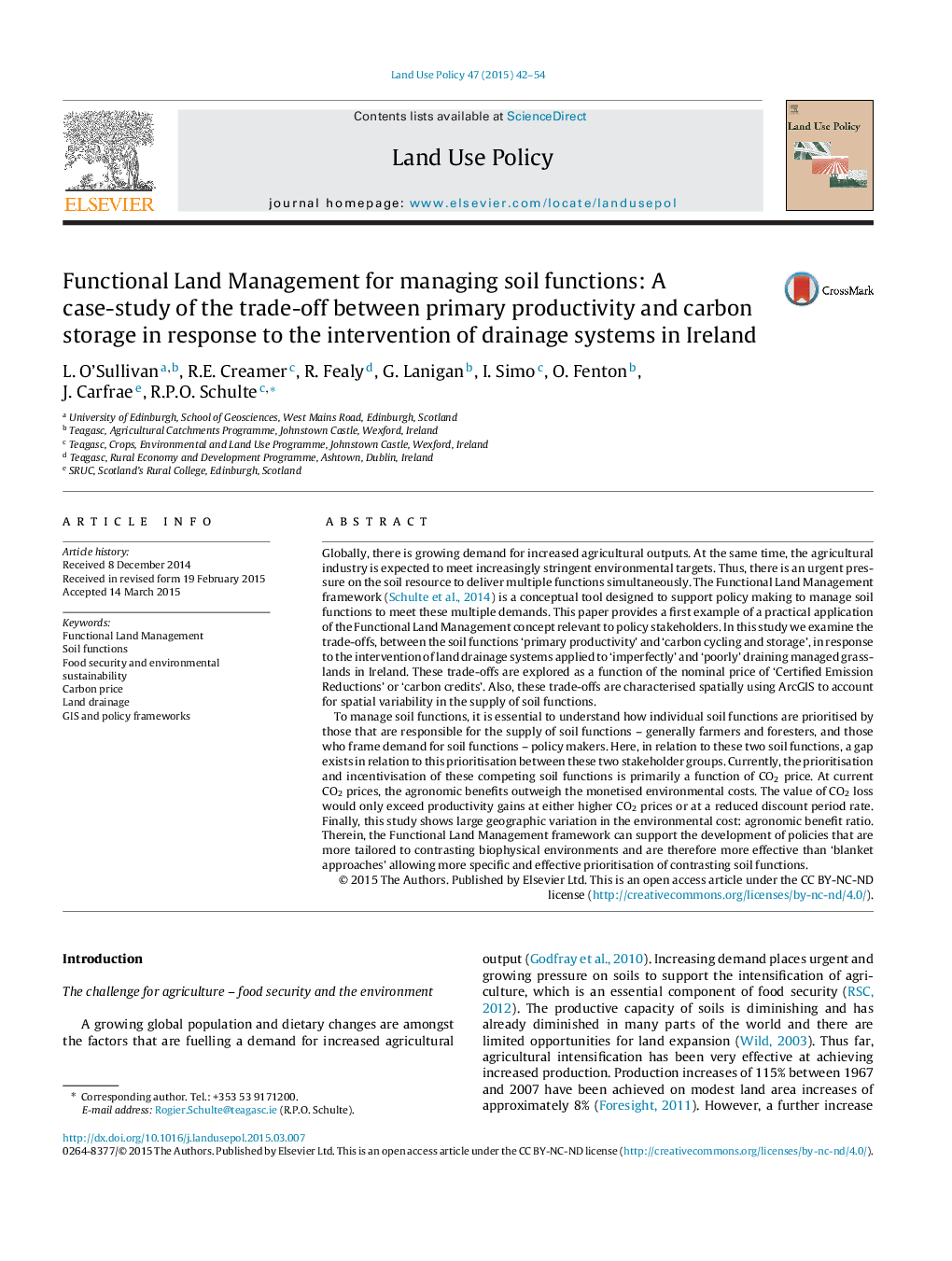| Article ID | Journal | Published Year | Pages | File Type |
|---|---|---|---|---|
| 6548054 | Land Use Policy | 2015 | 13 Pages |
Abstract
To manage soil functions, it is essential to understand how individual soil functions are prioritised by those that are responsible for the supply of soil functions - generally farmers and foresters, and those who frame demand for soil functions - policy makers. Here, in relation to these two soil functions, a gap exists in relation to this prioritisation between these two stakeholder groups. Currently, the prioritisation and incentivisation of these competing soil functions is primarily a function of CO2 price. At current CO2 prices, the agronomic benefits outweigh the monetised environmental costs. The value of CO2 loss would only exceed productivity gains at either higher CO2 prices or at a reduced discount period rate. Finally, this study shows large geographic variation in the environmental cost: agronomic benefit ratio. Therein, the Functional Land Management framework can support the development of policies that are more tailored to contrasting biophysical environments and are therefore more effective than 'blanket approaches' allowing more specific and effective prioritisation of contrasting soil functions.
Related Topics
Life Sciences
Agricultural and Biological Sciences
Forestry
Authors
L. O'Sullivan, R.E. Creamer, R. Fealy, G. Lanigan, I. Simo, O. Fenton, J. Carfrae, R.P.O. Schulte,
